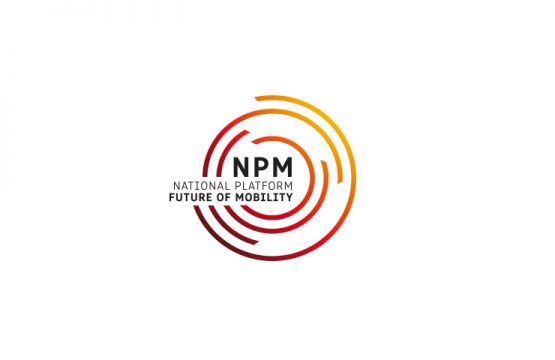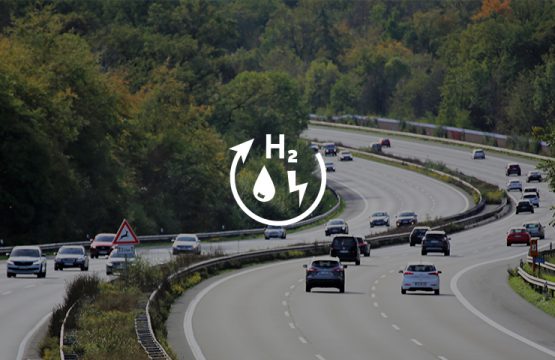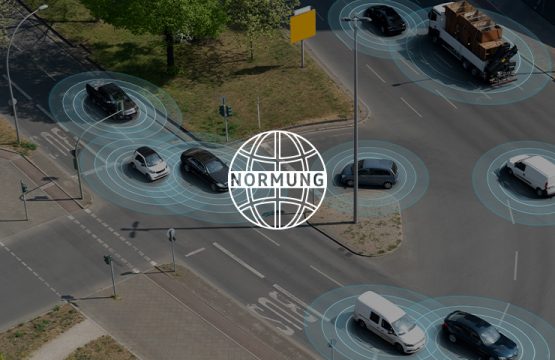The fleet limits for heavy commercial vehicles set to enter into force in 2025 increase the pressure to pave the way for the ramp-up of electromobility in lorries. This goes hand in hand with the development of the relevant charging infrastructure. In its report, published today, WG 5 Connecting mobility and energy networks, sector integration of the NPM is providing concrete recommendations for action to achieve a needs-based and economical development of private and public charging infrastructure for battery-electric lorries (BEV lorries).
The charging infrastructure for battery-electric lorries is still in its infancy. In light of new legislation coming into force in the next few years and due to the relevant lead times, groundwork must be laid today so that logistics companies, fleet operators, charging infrastructure and vehicle manufacturers as well as infrastructure developers can fund, develop and provide suitable technical solutions and facilities. The report highlights the fact that reliable data on vehicle ramp-up is needed for the logistics sector and infrastructure developers to be prepared to invest. These figures need to be established in closed-door meetings and shared with the relevant market stakeholders.
Charging technology
Based on the charging scenarios identified, the report provides an overview of the sites and charging outputs that will be used to charge BEV lorries privately and publicly. On the basis of the existing Combined Charging Standards (CCS), private charging in depots will be the first area of focus, as well as the development of an initial public network. The charging scenarios clearly show that very high charging outputs of up to 1 megawatt will not always be required, even in the public network, notably in the case of overnight charging where lower charging outputs in combination with load management make more sense.
Network connection
The network connection plays a key role in both private and public charging; to ensure smooth implementation, it is crucial to involve local network operators early on in the process and to provide the necessary information on output requirements for planning purposes. The report also clarifies that for reasons of time and cost, network connections need to be kept within the medium-voltage range, rather than in the high voltage range; back-up systems and options for individual optimisation are meaningful additional measures.
Sites and viability
A more detailed analysis of sites and financial viability for depot charging shows that the fitting out of service yards with charging infrastructure should be a priority. In order to implement this, logistics companies require sufficient support in terms of finance and processes when upgrading their fleets and developing the necessary charging infrastructure.
Public charging comes with its own challenges regarding sites and financial viability, including the space available for lorry charging bays. As an initial step, free areas at lorry stops and service stations should be used in addition to conveniently located service yards and exhibition grounds. Subsequently, when ramp-up is in full swing, new sites alongside primary transport routes can also be opened up. The question of where the charging socket is to be positioned in the vehicle needs to be fully resolved and standardised so that sites can be planned effectively.
When it comes to the financially viable operation of public charging infrastructure, there will be a viability gap during the ramp-up phase which needs to be closed, e.g. via fast-start financing or an allocation model similar to the one being prepared for cars. However, the higher demands on sites and charging technology for BEV lorries will have to be taken into account.
Finally, digitalisation will be key, especially in the area of public charging infrastructure for lorries, including the necessity of a reservation system. The report shows that public charging infrastructure needs to offer a reservation option to ensure the smooth operation of the logistics sector, i.e. journeys and arrival times can be planned precisely. Greater clarity is needed with regard to the duties, responsibilities and liability of those involved, a fair use policy and the conditions for technical implementation.
The report is available to download on https://www.plattform-zukunft-mobilitaet.de/en/berichte/.

About NPM – National Platform Future of Mobility
The National Platform Future of Mobility brings together experts in the fields of politics, the private sector, associations, research institutes and NGOs to develop visions for sustainable, environment- and climate-friendly, affordable and competitive mobility in Germany. Presided by Prof. Dr. Henning Kagermann, six working groups develop intermodal guidance for politicians, businesses and society in a technologically-neutral way.
Contact:
Alexandra Huß
Communication advisor
Office of the Chairman of National Platform Future of Mobility
huss@acatech.de
+49 (0)30 / 206 30 96 86
+49 (0)160 / 714 93 25






